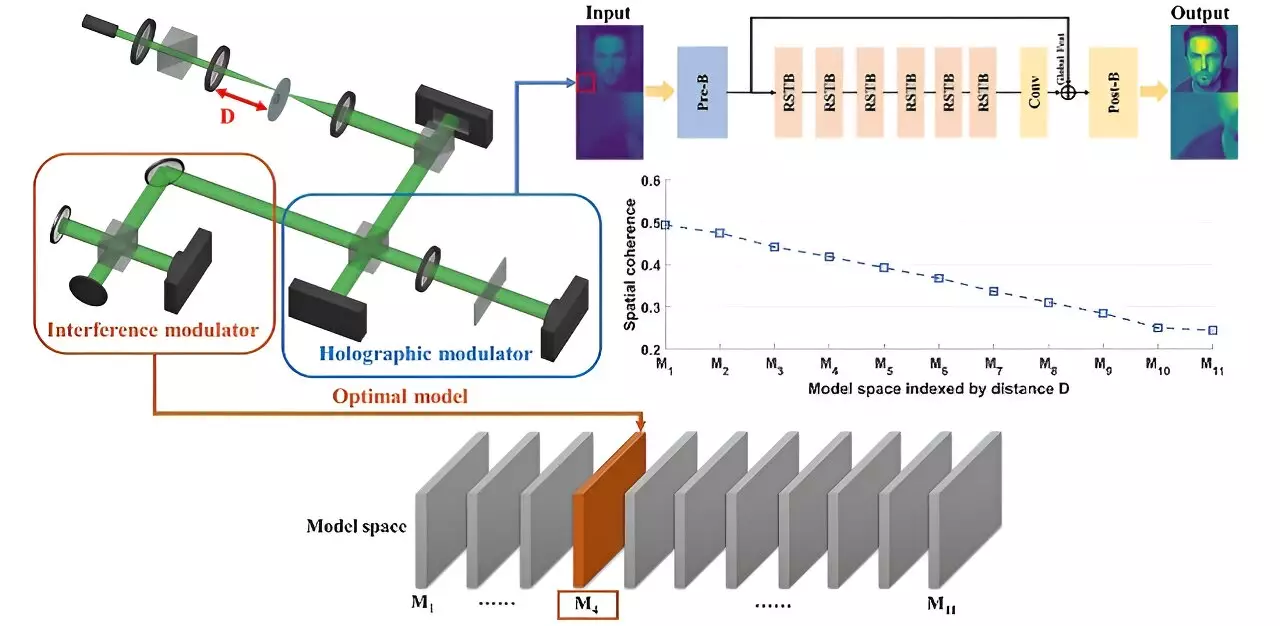The field of holographic imaging has long grappled with the issue of distortions in dynamic environments. This challenge has proved particularly troublesome for traditional deep learning methods, which struggle to adapt to diverse scenes due to their reliance on specific data conditions. However, researchers at Zhejiang University have recently made significant strides in overcoming these limitations by exploring the intersection of optics and deep learning.
In their groundbreaking study titled “Harnessing the magic of light: spatial coherence instructed swin transformer for universal holographic imaging,” published in the journal Advanced Photonics, the researchers shed light on the key role of physical priors in aligning data and pre-trained models. Specifically, they focused on the impact of spatial coherence and turbulence on holographic imaging and proposed an innovative solution called TWC-Swin.
Spatial coherence, which measures the orderliness of light waves, is crucial for clear and accurate holographic imaging. When light waves are chaotic, holographic images become blurry and noisy, carrying less information. Unfortunately, dynamic environments, such as those plagued by oceanic or atmospheric turbulence, introduce variations in the refractive index of the medium, disrupting the phase correlation of light waves and distorting spatial coherence. Consequently, holographic images may become blurred, distorted, or even lost.
To address these challenges, the researchers developed the TWC-Swin method, an acronym for “train-with-coherence swin transformer.” This method leverages spatial coherence as a physical prior to guide the training of a deep neural network based on the Swin transformer architecture. The Swin transformer excels at capturing both local and global image features, making it highly effective for holographic imaging.
To validate their method, the researchers designed a light processing system that generated holographic images under varying spatial coherence and turbulence conditions. These holograms, which were based on natural objects, served as training and testing data for the neural network. The results were nothing short of remarkable.
TWC-Swin successfully restored holographic images even in situations of low spatial coherence and arbitrary turbulence, surpassing the capabilities of traditional convolutional network-based methods. Furthermore, the method demonstrated strong generalization capabilities, extending its application to unseen scenes that were not part of the training data.
This research undoubtedly breaks new ground in addressing image degradation in holographic imaging across diverse scenes. By integrating physical principles into deep learning, the researchers have unveiled a successful synergy between optics and computer science. As the future unfolds, this study paves the way for enhanced holographic imaging, enabling us to see clearly through the turbulence and revolutionizing the way we visualize the world around us.


Leave a Reply